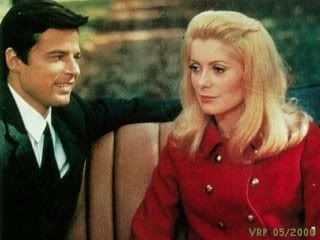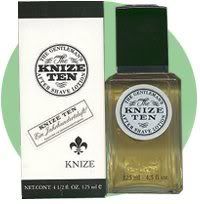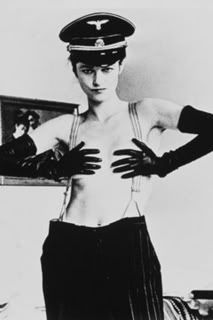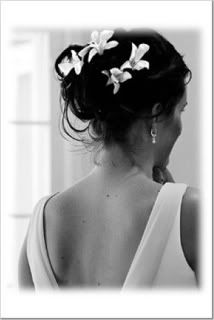
Coming across the new Tuberose Gardenia by Estée Lauder was not an accident. It was thanks to a very thoughtful person who was able to obtain a precious sample for me and sent it against all odds for my tentative sampling. Gratitude is in order.
No hesitation was necessary on my part, though, regarding testing the elusive jus that is featuring as the first stepping stone on the new Private Collection by Estée Lauder, a line that will be positioned between niche and mainstream: limited distribution on the one hand (Neiman Marcus, Saks, Bergdorf Goodman, Holt Renfrew), but relatively sane prices on the other. The concept was masterminded by Aérin Lauder, the granddaughter of ingenious Estée, who is working as Creative Director of the huge brand. The name Private Collection recalls the cool upscale scent of tennis lawns and cool drinks sipped at a Hamptons party that Estee herself called her own and which Grace Kelly admired and asked to partake in, to great aplomb. That scent featured all the aloofness of an east coast heiress and a sophistication that befitted the empress of a multimillion company such as Lauder. Tuberose Gardenia is a different animal, nevertheless.
As I opened the carded sample, spraying with eager, childish anticipation the pale yellow liquid, with its shimmering gold cap, I was immediately reminded of a favourite literary accompaniment to my teenager escapades pertaining to summer. It is a book involved in a strange ritualistic process which I am not ashamed to share with you. With each passing summer in the course of my life so far, this book has been my introduction to the joys and anticipations of a summer spent in the sensuous atmosphere of southern Europe. A book that keeps me young at heart. Every June it gets pulled off the shelf to rapidly leaf through it and remind myself of the hopes and longings of its precious characters of three teenager girls, who search for their inner core through the little adventures of first loves and self-discovery in the milieu of then rural, now uptown suburb of Kiffisia, where they are vacationing with their divorced mother, their artistic and pretentious aunt and their dotting but love-hurt grandfather through three consecutive summers.
The book is called "Three Summers"/"The straw hats" (the latter is the literal translation from Greek) by Margarita Lymperaki, a Francophile Greek writer.
Please read a bit about it courtesy of boutique.info-grece.com:
"That summer we bought big straw hats. Maria's had cherries around the rim, Infanta's had forget-me-nots, and mine had poppies as as fire. When we lay in the hayfield wearing them, the sky, the wildflowers, and the three of us all melted into one..."
"Three Summers" is the story of three sisters growing up in Greece: their first loves, lies, and secrets, their shared childhood experiences and their gradual growing apart. Maria, the oldest, is strong, sensual, keenly aware of society's expectations. Infanta is beautiful, fiercely proud, aloof. Katerina is spirited, independent, off in a dream world of her own. There is also the mysterious Polish grandmother, the wily Captain Andreas, the self-involved Laura Parigori... Katerina tells the story of these intertwined lives with imagination, humour, deep tenderness, and a certain nostalgia. "Three Summers" is a romance with nature, with our planet. It is the declaration of a young girl in love with life itself.
The book is available here.
Tuberose Gardenia reminded me of exactly that book. There is an innocence and a wiling beauty in it simultaneously. It encompasses elements of all three girls, as it smells fresh, creamy, soft and inviting, yet also assured and independent.
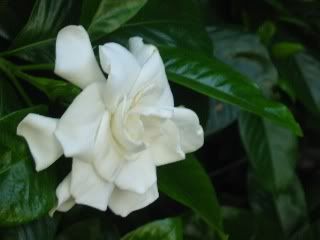
White florals are an agony, an ache, an olfactory rape almost. They tend to grab you and place their hooks on you or else repel you and make you coil in desperation.
As Colette famously wrote:
"She, the tuberose. She would set off on the sirocco wind, cross the road, force open my door with all her flowerly might and softly climb the stairs...a cloud of dreams burst forth and grows from a single, blossoming stem, an unthreatened peace"
And gardenia, with its elusive white creamed clotted density amidst green buds rotting ever so sweetly on the jacket lapel of a dark handsome stranger who is meant to sweep you off your feet, is the flower of spiritual surrender.
Those two voluptuous blossoms dominate the heart and soul of Lauder's new fragrance, never betraying their nature, yet remaining ever soft and very wearable, unlike the olfactory typhoon of assertive Fracas. An initial fresh opening that is reminiscent of lemon groves overlooking countryhouses where potted tuberoses are kept takes you on a journey to an inner closed court with a fountain, Moor-style, where gardenias are kept in big pots. Their aroma mingling night and languor, beckoning you, beguiling you. The gardenia accord smells surprisingly true in this. There is no tropical ambience a la Carnal Flower by F.Malle, a tuberose with which I am nevertheless flirting shamelessly, nor is there the airiness of the lighter Do Son by Diptyque which is more suited to the intense heat of late summer.
Tuberose Gardenia combines freshness and ever so slight spicy richness in linear laps of sillage-worthy swims into a vat of smooth vanillic cream.
Official notes:
neroli, lilac, rosewood, tuberose, gardenia, orange flower, jasmine, white lily, carnation and vanilla bourbon.
Tuberose Gardenia launches in August and will be available in bottles of Eau de Parfum in 30/1oz or 75ml/2.4oz and Parfum extrait of 30ml/1oz in a beautiful bottle of gold bearing gems encrusted to it, which has been inspired by a Josef Hoffmann jewel brooch.
The line is to be completed by a Body cream and a solid perfume.
Click here to see the beautiful packaging.
Pic originally uploaded on MUA by lipslikesugar, pic of gardenia originally uploaded by Indie perfumes blog
.jpg)

